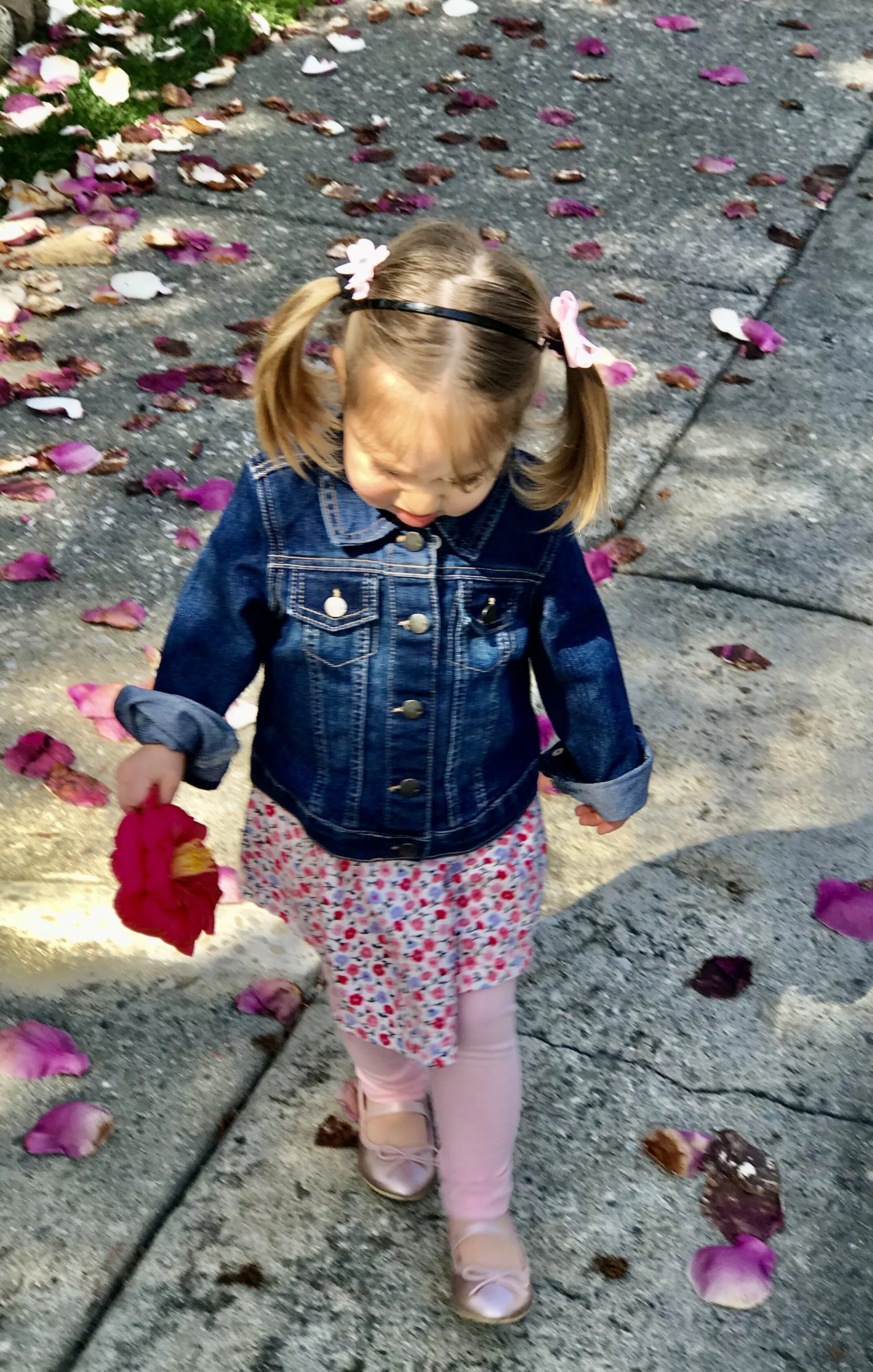“Minds are like flowers; they open when the time is right.”
—Stephen Richards
“See the world with the innocence fo children.
Approach the world with the daring of children.
Love the world with the readiness of children.
Heal the world with the purity of children.
Change the world with the wisdom of children.
—Neale Donald Walsch
Somehow the meditating Buddha in our atrium garden—one white and one black—has become Lyla’s imaginary friend.
One day she pointed to the black Buddha and asked what’s that? “The Buddha,” I said. She had a difficult time pronouncing his name at first. But, in no time she learned to say his name very clearly. I didn’t try to explain what the iconic figure represented except to say he is "happy and peaceful.” After all, she is barely 2 1/2 years old. One day, she had the desire to wash the Buddha with a wet paper towel. I’m really not sure why, but she did so with such gentleness and joy as if it were one of her favorite dolls. One day she witnessed me placing a rose on the lap of the Buddha. Suddenly, every time we baby sat her, she asked to do the same. She also began to take a few petals from our large potted jade tree and placed them in the lap of the Buddha and even try to feed him.
Today is Buddha’s birthday in the United States. In Asia it is celebrated during different times of the Lunar calendar. Temples are decorated with flowers. A special ceremony called “bathing the baby Buddha, is a popular ritual especially among children. People pour water over a statue of the Buddha. It is a way to show respect to the Buddha for his teachings and to celebrate new beginnings. It is symbolic of a purification process on the inside not an actual cleaning of the body.
Flowers are considered the most suitable offerings to the Buddha. There are frequent references to flowers in the sacred scriptures that the Buddha enjoyed their presence in the monasteries and gardens at the edge of Ganges, where he taught and meditated more than 2,600 years ago. Buddha means “one who is awake,” attributed to when he became enlightened. The former prince was not a god, but rather a philosopher, mendicant, meditator, spiritual teacher and religious leader who lived in ancient India.
In the town of Luang Prabang in Laos, where Cecile and I visited a few years ago, we witnessed and participated in rituals that form the basis of everyday life both for the monks and ordinary lay people. Every gesture and every object has a meaning and a history stretching back centuries. Many of these rituals are accompanied by flowers. The best flowers to offer are those that fall from a tree or plant, for it is believed that to cut a bloom is to destroy a living thing. The idea being not to remove or take anything that is not freely given, a hard concept to teach a child. Flowers represent impermanence—a central teaching of Buddhism. They are sweet-smelling one day and foul and withered the next. They also represent generosity and symbolize the beauty of enlightenment. The jade plant is often called the “friendship plant” and is a staple in many Asian households. In places like Bali, India, Thailand. Laos, Nepal you will see the remains of offerings everywhere.
The Lotus Flower grows in the deep mud, far away from the sun. But, sooner or later, the Lotus reaches the light becoming
the most beautiful flower ever. It is highly regarded in many different cultures, especially in eastern religions as a symbol of purity, enlightenment, self-regeneration and rebirth.
Its characteristics are a perfect analogy for the human condition: even when the roots are in the muddiest of waters, the Lotus produces
the most beautiful flower. The Buddha is sometimes depicted sitting on a Lotus Flower, symbolizing the one who overcame
the trials and tribulations in the material world and became enlightened, just like the lotus flower which begins to grow in the
muddy water but manages to surpass the water and produce the perfect flower.
Lyla, who wore a flower print dress today painted today with two brushes, planted a soon-to-become flower garden that Cecile bought for her and before we took her home
she helped me spread rose petals on the lap and at the foot of the Buddha.















